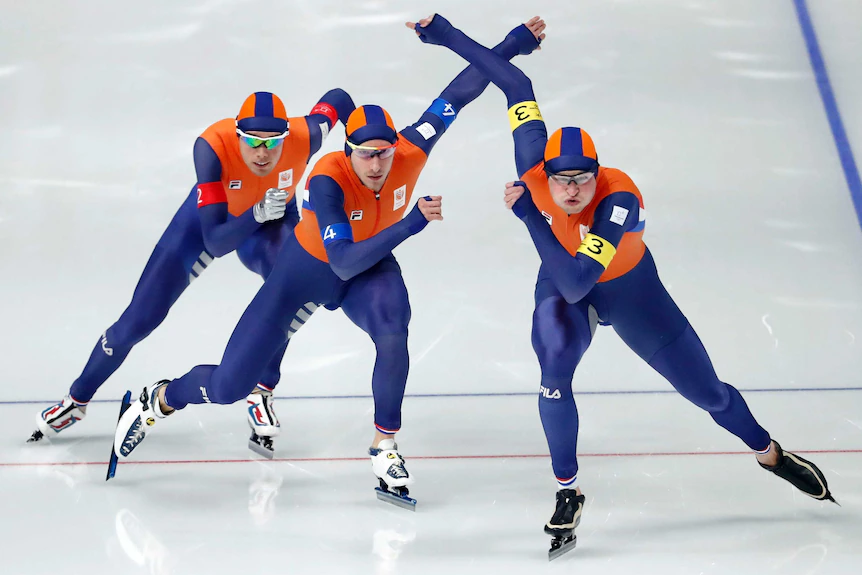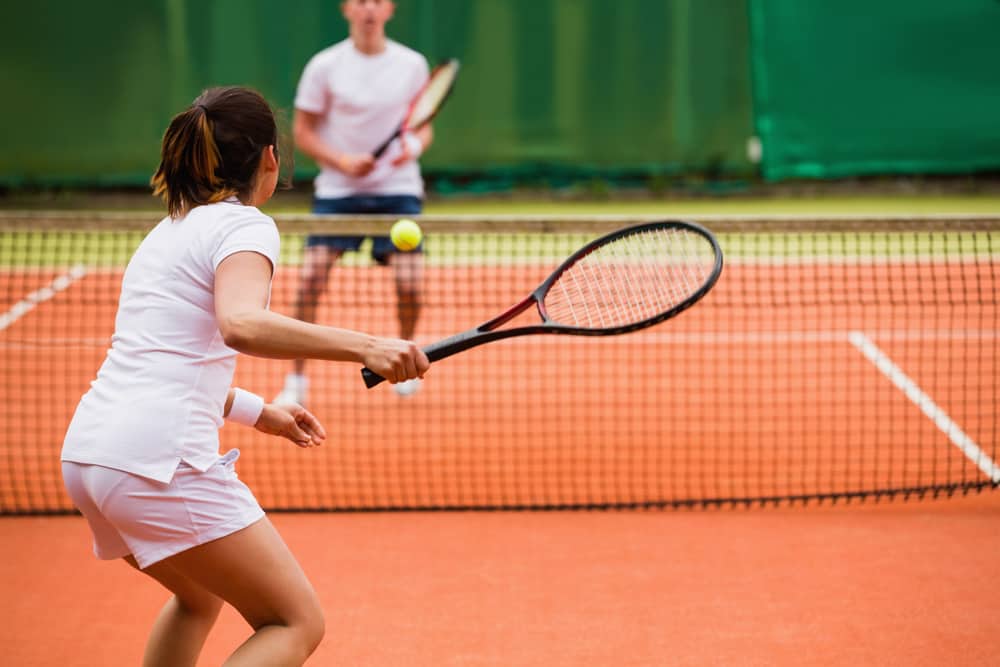Sport is one of the few settings where the catastrophic ramifications of identity politics are displayed for all to see. Sport is about quality of performance, not equality of outcomes. Yet while society is besieged by pronoun preferences and gender updates, the very foundation that women’s sport is built upon is under threat by basic biology; men are competing as and against women.
Why is women’s sport its own category?
To say men and women are physically unequal was once an uncontroversial biological observation. As such, sex-segregated sport is a product of the same logic that determines weight classes in boxing and specific categories within para-sports; those more greatly impacted by an impairment are not mandated to compete with those at an advantage.
The differences between sexes in the context of sport are due in large part because women lack the benefit of androgenization – the exposure of sensitive tissues to androgens that drive a set of secondary sex characteristics in men. These changes result in higher muscle mass, lower fat mass, greater strength, increased cardiovascular capacity, higher Vo2 max, stronger bones, higher blood volume and haemoglobin. In fact, the scientific evidence shows that on average men have 80% more muscle mass in their upper bodies and 55% in their legs.
Thus, the distinct category from men protects the integrity of female performances. Moreover, androgenization is not a social construct – it is the biological platform for a profound athletic advantage.
Concept versus reality
In athletics events from the 100m to the marathon, the differences between men and women are between 10-12%. When power events or contact sports are taken into consideration, the difference increases by an order of magnitude. The starting gap between male and female weightlifters is around 30% and even greater in throwing events that utilise upper body strength. In terms of contact or combat sport, punching power is 260% higher in men than in women.

Science cannot be subdued by self-identification because biological sex is not a matter of the mind. A 16-year-old boy cannot change his date of birth and take part in an event for Under13’s, yet that same boy is able to change his gender and compete against 16-year-old girls, as was the case at a Connecticut high school in the United States.
In The Sports Gene,author David Epstein notes thatup until the age of 10, boys and girls have similar bodies, while their top running speeds are almost identical. But after puberty, when boys are “literally on natural steroids”, men’s and women’s records are “no longer in the same athletic universe”. This is why sex and gender cannot be conflated; rejecting these differences or denying their validity dismantles the first principles by which women’s sport exists.
Australia
This is not simply a philosophical or moral struggle being played out online or on social media; it directly affects women and girls here in Australia who are paying the price for an ‘inclusion at all costs’ mentality.
As it stands, Sport Australia has no definition for what a woman is or who women’s sport is for. The country’s peak body for sport recently followed a global trend of conceding to orchestrated outrage over evidence with the release of their Trans and Gender Diverse Inclusion guidelines. The recommendations mirror the position taken by the International Olympic Committee, which drop a requirement for sex-reassignment surgery for transgender athletes.
View this post on Instagram
Their policy advises clubs and organisations in Australia to structure sports based on selfidentified gender rather than biological sex. Not only is this a significant safety concern for women’s sport, but it also represents a considerable challenge for junior development, with young girls now also facing the prospect of competing against both sexes.
During questioning in a Senate estimates hearing by Senator Claire Chandler, Sport Australia’s acting chief executive Rob Dalton claimed that he “didn’t have an opinion” as to whether or not young girls would be deterred from taking part in sport in which they were also competing against biological males.
Asked if Sport Australia agreed that women’s sport was intended for biological females, Mr Dalton was “not specifically aware” of Sport Australia’s policy. When responding to questions taken on notice three months after the hearing, Sport Australia stated that it has no definition for the term ‘woman’ as it pertains to policy and decision making for women’s sport, and refused to disclose who was consulted when devising the guidelines.
Legislating stupidity
Sport Australia’s trans-athlete guidelines underscore the risk of potential legal action faced by organisations that don’t comply on the basis of anti-discrimination, giving the following example:
Indirect discrimination might be a sporting organisation requiring a birth certificate upon registration, and not accepting any alternative form of documentation to verify a person’s gender. This may disadvantage transgender and non-binary players if their birth certificate does not align with their gender identity. If reasonableness could not be established, the sporting organisation might be at risk of a successful discrimination claim.
Within this framework, a local rugby club could be liable for a discrimination claim if a male who self-identifies as a female is not permitted to participate as a woman. In reality, the inclusion of male-born rugby players in women’s competition actually amounts to indirect discrimination against biological females, not those self-identifying as such. Biological men competing as women present an unreasonable risk due to the proven, significant strength differences between the sexes. This is consequential given that there is precedent for rugby bodies being held liable for causing unreasonable risks by failures to apply player-safety laws.
There are practical implications for this pseudo-intellectualisation of gender and sex; women and girls will be hurt and the integrity of their sport is at risk of being legislated out of existence.
Revisionist biology
Under the International Olympic Committee rules, athletes do not need ‘surgical anatomical changes’ to compete as a woman. Rather, they must demonstrate that their serum testosterone levels have been under 5 nmol/L for at least 12 months, down from the previous limit set at 10 nmol/L in 2015. The average woman has a level of around 1.7, with 99% being under 3. Certain medical conditions elevate levels to 5, but above that occurs at a 1/10000 chance.
The lowering of testosterone promulgates a number of physiological changes, but it does not alter the skeleton or size of the heart and lungs. One of the most widely-used markers of strength is hand-grip, and 90% of females produce less force than 95% of males.
The problem is that even for males undergoing hormone therapy, anthropometric advantages will always remain. Men are on average 9% taller than women, have a peak bone mass around 50% greater and have longer arms and legs. Even the changes that do occur are often limited in their significance; muscle mass drops marginally but muscle strength remains unaltered.
Sport Australia may not have a definition for a woman in sport, but the science here is definitive.
Trans rights and wrongs
It is wrong to dismantle the legal sporting categories of men and women under the semblance of equality and trans-rights. This is not about denying the rights of individuals to identify as transgender, rather the assumed right that someone born a male can be recognised as the best woman in women’s sport.
Publicly stating the basic biological differences between men and women is now considered controversial. Those who express their concerns do so at the risk of being labelled bigots as a new McCarthyism enters the world of sport.
Sport has historically been the exclusive right of men, and nowhere has this been more apparent than on the Olympic stage. Pierre de Coubertin, the founder of the modern Olympic movement, stated the Games were created “for the solemn and periodic exaltation of male athleticism” with “female applause as a reward”. London 2012 was the first time in Olympic history where all participating countries had women’s representation, yet they still compete in 30 fewer events than men.
Having had to fight to change the rules in order to compete on the same stage as men, women’s sport now finds itself having those very rules turned against them.
The consequences are already visible. Women’s weightlifting, only an Olympic Sport since 2000, now has a biological man winning medals at World Championships. There are numerous high profile cases of men competing as women on the world stage, yet according to sports scientist Ross Tucker, the impact is likely to be much larger at the levels below that, where 99% of sport is played: “It’s the ‘steep part of the curve’, where a mediocre biological male might leap into the representative level, winning local events, or places on teams that compete at the next level up”. This presents an obstacle that young girls entering sport should not have to overcome.
Balance over brawn
This is not to say that there are no women athletes who can compete with men, it’s about recognising biological distinctions and the corresponding risks to health and safety.
Not all sports are about power or contact. For example, physical and anthropometric factors are less decisive in shooting than in many other sports. Rather, movement accuracy, coordination and balance are paramount. Recent analysis has shown that in rifle shooting, no differences were found between men and women except in junior categories, where women outperformed men in four out of six position ranges.

Same sport, different game
Even when the rules are the same, the biological differences between men and women produce very different sporting spectacles.
There is more parity between the exposure of men’s and women’s than almost any other sport. Men and women play the most prestigious tournaments simultaneously and are given the same exposure by broadcasters organisers. Women play on the same courts and are often given precedence over male competitors. Such was the case when Li Na played on Centre Court at Wimbledon in 2014, with Grigor Dmitrov relegated to Court 1. Moreover, while only three women appear on Forbes’ list of the 100 highest-paid athletes, all of them are tennis players. Competitiveness is one of the most important factors in the sports industry, with a clear economic relationship existing between gate receipts and the uncertainty of the outcome of the game. As such, it is widely believed that the better the competitive balance between the contestants, the more successful a sports competition will be, as the outcomes of the matches will be more uncertain. 1
In 2010 the Journal of Sports Economics published a study titled: Gender, Competitiveness, and Physical Characteristics: Evidence from Professional Tennis. The analysis found a significant gender difference in competitiveness (tightness) in regard to the final score of tennis sets, with the results attributed to physical differences such as height and weight.
The study recommended that tennis authorities consider changing the rules of tennis on a gender basis in order to equalise the physical conditions, as is the case in sports such as volleyball, hurdles and basketball.

Male and female tennis is played on courts with the same dimensions and surfaces, and the same equipment. However, by making adjustments it is reasonable to believe that the gender gap in the tightness of the final score between men’s and women’s tennis would be narrowed. Until then, the authors noted, the same court conditions make men’s and women’s tennis a completely different game.
Without the physiological boundary of male and female competitions, half of the world’s population loses its place in sport. Equality in sport does not determine equity, and transinclusiveness comes at a cost. That cost is the integrity of women’s sport.
1 Gender, Competitiveness, and Physical Characteristics: Evidence From Professional Tennis
